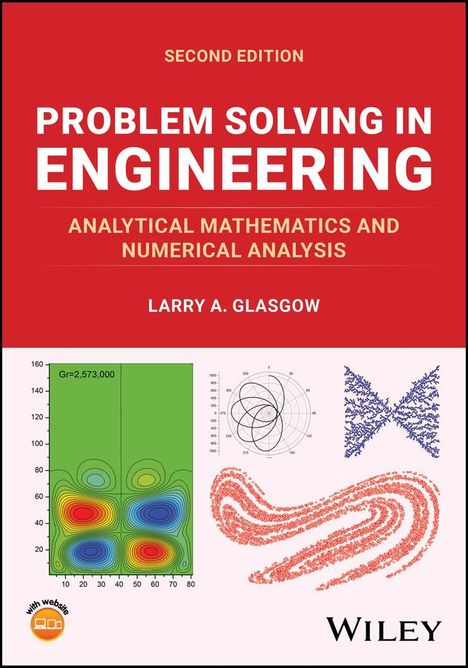Larry A. Glasgow: Problem Solving in Engineering, Gebunden
Problem Solving in Engineering
- Analytical Mathematics and Numerical Analysis
(soweit verfügbar beim Lieferanten)
- Verlag:
- John Wiley & Sons Inc, 05/2025
- Einband:
- Gebunden
- Sprache:
- Englisch
- ISBN-13:
- 9781394179985
- Artikelnummer:
- 12085283
- Umfang:
- 560 Seiten
- Gewicht:
- 1418 g
- Erscheinungstermin:
- 25.5.2025
- Hinweis
-
Achtung: Artikel ist nicht in deutscher Sprache!
Klappentext
Bring mathematical principles to bear on engineering problems with this updated text
The evolution of industrial processes has resulted in greater emphasis upon analytical and numerical problem solving. Process improvement through experimentation is impractical and consequently engineers must rely upon computational and technical analysis. Furthermore, the ease with which time-series data can be collected and processed has made harmonic signal interpretation routine. Thus, the ability of engineers to analyze, model, compute, and interpret process phenomena is crucial to professional practice.
Problem Solving in Engineering meets these needs with a foundational introduction to mathematical techniques in applied sciences and engineering. Incorporating examples from a range of scientific fields, it communicates principles that can be adapted to many hardware-software combinations. Now fully updated to reflect the latest research and applications, it remains an essential tool for engineers and applied scientists everywhere.
Readers of the second edition will also find:
- Extensive time devoted to problem formulation
- Detailed discussion of integro-differential equations and the processing and analysis of time-series data
- The use of vorticity transport for the solution of momentum, heat, and mass transfer problems in two dimensions
- Examples and problems drawn from aviation, telegraphy, structural failures, railroad operation, chemical processes, automatic process control, seismology, neutron diffusion, gravitation, and quantum theory
- Many additional narrative-type exercises written to appeal to students who find problems in context better suited to their learning style
- Solutions manual available for qualified instructors
Problem Solving in Engineering is ideal for advanced undergraduate, graduate students, and technical professionals in the physical sciences, specifically chemical, civil, biochemical, electrical, and mechanical engineering, as well as physics, chemistry, and biology.

